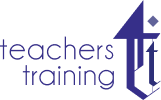Teaching assistants (TAs) play a crucial role in classrooms, but for those seeking to expand their skill set, increase their earning potential, and take on greater responsibility, the Higher Level Teaching Assistant (HLTA) role presents an exciting opportunity. Let’s dig deeper into the distinctions between a TA and an HLTA in 2024, explore the expanded responsibilities of this advanced role, discuss the latest salary information, and outline the clear pathway to becoming an HLTA.
Beyond the Basics: Differentiating TA and HLTA Roles
Teaching Assistants: TAs work collaboratively with teachers to ensure a positive learning environment for all students. Their primary responsibilities include:
- Assisting with lesson delivery and preparation
- Providing individualised student support
- Facilitating classroom management
- Contributing to marking and assessment
Higher Level Teaching Assistants: HLTAs take on a more prominent role within the classroom, with increased responsibility and autonomy. This can involve:
- Leading classes independently, particularly for lower key stages
- Planning and delivering full lessons
- Covering planned absences of teachers
- Overseeing other learning support staff
- Contributing to curriculum development
- Supporting students with Special Educational Needs (SEN)
If you’re interested in advancing your career to become a Higher Level Teaching Assistant(HLTA), check out our detailed guide on how to make that leap [Becoming a Higher Level Teaching Assistant (HLTA)].
Salary Potential: Investing in Your Future
Transitioning to an HLTA role typically results in a significant salary increase, reflecting the expanded responsibilities and expertise required. Here’s a breakdown of current salary ranges for both TAs and HLTAs:
- Teaching Assistants:
- Level 1: £18,131
- Level 2: £18,000-20,000
- Level 3 and those with additional specialisms or SEN responsibilities: £25,000+
- Higher Level Teaching Assistants:
- Median Salary: £23,400 per year or £12 per hour
- Experienced HLTAs: Up to £28,917 per year
The Path to Becoming an HLTA: Equipping Yourself for Success in 2024
Eligibility Criteria:
- Minimum age of 16 years old
- Strong literacy skills
- Current employment as a TA in a school for at least 12 hours per week
- A minimum of 50 hours of experience working directly with students in a classroom setting
HLTA Course Overview
- The Level 4 Certificate in Higher Level Teaching Assistant (HLTA) remains the crucial qualification for aspiring HLTAs.
- The course consists of seven core units covering crucial areas mentioned earlier.
- Practical observation in a school setting is still mandatory. Current employment or volunteering as a TA allows you to fulfil this requirement.
- Training providers offer accredited HLTA courses, often with online delivery options, allowing for flexible learning
Finding the Right HLTA Course
When choosing an HLTA course provider, consider the following factors:
- Delivery method: Online options offer flexibility, while in-person courses may provide a more interactive learning experience.
- Course accreditation: Ensure the course is accredited by a recognized awarding body.
- Start dates and schedule: Choose a program that aligns with your availability and learning pace.
- Support services: Look for providers offering comprehensive support throughout the course, including access to tutors and mentors.
Additional Considerations
- Funding options: Explore government grants, employer sponsorship, or student loans that might help finance your HLTA qualification.
Career progression: While an HLTA role opens doors within schools, consider your long-term goals. Do you aspire to become a qualified teacher or pursue a leadership role in education? The HLTA qualification can serve as a stepping stone towards further qualifications and career advancement.
Conclusion: Elevating Your Teaching Career in 2024 and Beyond
Transitioning from a TA to an HLTA signifies a significant step forward in your teaching career journey. By acquiring advanced skills, taking on greater responsibility, and pursuing specialised training, you can elevate your role within the educational setting, enhance your earning potential, and make a lasting impact on the lives of young learners. Enrol in an HLTA course today and begin a rewarding path to professional development and a bright future in education!
This revised version provides additional information for aspiring HLTAs, including tips for choosing a course and considerations for career progression. It also emphasises the HLTA qualification as a stepping stone for further educational pursuits.





